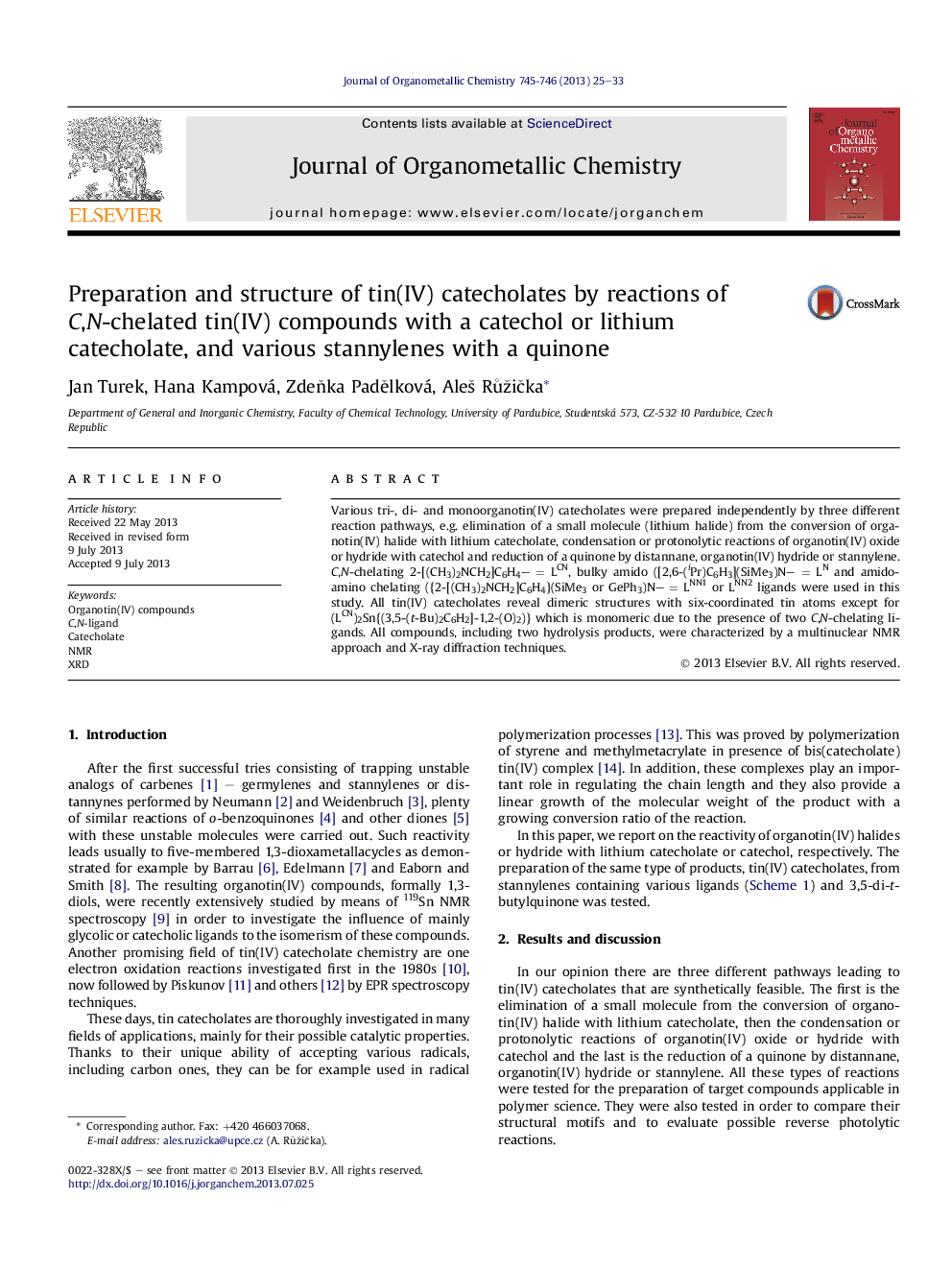| Article ID | Journal | Published Year | Pages | File Type |
|---|---|---|---|---|
| 1321512 | Journal of Organometallic Chemistry | 2013 | 9 Pages |
•Various tri-, di- and monoorganotin(IV) catecholates were prepared.•Three independent reaction pathways were used.•Structure was investigated by XRD and NMR techniques.
Various tri-, di- and monoorganotin(IV) catecholates were prepared independently by three different reaction pathways, e.g. elimination of a small molecule (lithium halide) from the conversion of organotin(IV) halide with lithium catecholate, condensation or protonolytic reactions of organotin(IV) oxide or hydride with catechol and reduction of a quinone by distannane, organotin(IV) hydride or stannylene. C,N-chelating 2-[(CH3)2NCH2]C6H4– = LCN, bulky amido ([2,6-(iPr)C6H3](SiMe3)N– = LN and amido-amino chelating ({2-[(CH3)2NCH2]C6H4}(SiMe3 or GePh3)N– = LNN1 or LNN2 ligands were used in this study. All tin(IV) catecholates reveal dimeric structures with six-coordinated tin atoms except for (LCN)2Sn{(3,5-(t-Bu)2C6H2]-1,2-(O)2)} which is monomeric due to the presence of two C,N-chelating ligands. All compounds, including two hydrolysis products, were characterized by a multinuclear NMR approach and X-ray diffraction techniques.
Graphical abstractVarious tri-, di- and monoorganotin(IV) catecholates were prepared independently by three different reaction pathways. All compounds including two hydrolysis products were characterized by multinuclear NMR approach and X-ray diffraction techniques.Figure optionsDownload full-size imageDownload as PowerPoint slide
